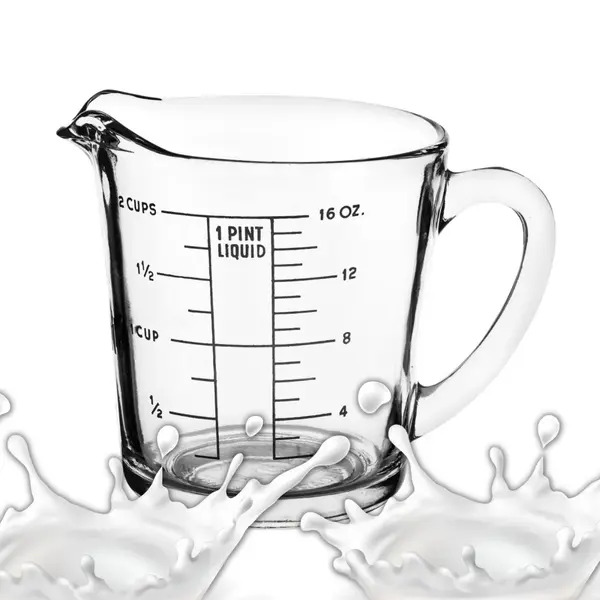Mastering how to read a Micrometers makes all the difference when it comes to accurate measurements in various fields. In a world where precision and accuracy continues to play a critical role, learning how to read a micrometre is essential.
In this piece, we’ll cover how to read a micrometre properly and it’s gradation.
Table of contents
What Is A Micrometer?
A micrometer, often referred to as a micrometer screw gauge, is a precise measuring instrument used for dimensional accuracy in various applications. It provides measurements with incredible precision, typically to the nearest thousandth of a millimeter.
The device consists of a calibrated screw mechanism that facilitates fine adjustments, allowing users to measure the thickness or diameter of objects with exceptional accuracy. Micrometers find widespread use in fields such as engineering, manufacturing, and quality control, playing a vital role in ensuring precision in measurements.
How Is A Micrometer Graded?
Micrometers are typically graded based on their resolution, which is the smallest increment of measurement that can be read on the device. The grading is commonly expressed in terms of the number of divisions on the thimble or barrel and the main scale.
- Mechanical Micrometers: Mechanical micrometers are often graded in terms of the number of divisions on the thimble. For example, a micrometer might be labeled as having 25 divisions on the thimble, meaning each division represents 0.001 inch or 0.025 millimeters.
- Digital Micrometers: Digital micrometers provide a digital readout and are graded by their electronic resolution. This resolution is expressed in the smallest unit of measurement that the micrometer can display, such as 0.001 mm or 0.0001 inch.
The grading is crucial as it determines the level of precision the micrometer can achieve, influencing its suitability for specific measurement tasks. Users should choose a micrometer with the appropriate grading based on the precision required for their applications.
How To Read A Micrometer?
Reading a micrometer involves interpreting the measurements on both the thimble and the main scale. Here’s a step-by-step guide:
- Check the Type of Micrometer: Determine whether you have a metric or imperial micrometer. The main scale and thimble markings will be in either millimeters or inches, depending on the type.
- Read the Main Scale: Identify the whole millimeter or inch reading on the main scale. This is the number to the left of the zero on the thimble.
- Read the Thimble Scale: Note the number of divisions on the thimble that align with the main scale. Each division typically represents 0.01 mm or 0.001 inch.
- Combine the Readings: Add the main scale reading to the thimble reading. This gives you the measurement up to the precision of the smallest division on the thimble.
- Consider the Sleeve/Cylinder Reading: Some micrometers have a sleeve or cylinder with additional markings. Take note of this reading and add it to the combined main and thimble reading for the final measurement.
- Final Measurement: Combine all the readings to get the precise measurement. Be aware of any zero errors and adjust accordingly.
Uses Of A Micrometer
Micrometers serve a variety of purposes across different industries due to their exceptional precision. Here are some common uses:
- Precision Machining: Micrometers are essential tools in machining processes, enabling machinists to measure and ensure the accuracy of components with high precision.
- Engineering and Manufacturing: In engineering and manufacturing settings, micrometers are used to measure dimensions of machine parts, ensuring they meet specified tolerances.
- Quality Control: Micrometers play a critical role in quality control processes by providing accurate measurements to verify the conformity of manufactured items with established standards.
- Metalworking: Metalworkers use micrometers to measure thickness, diameter, and length of metal components, ensuring precise specifications are met.
- Automotive Industry: Micrometers are employed in automotive manufacturing for measuring engine components, bearings, and other critical parts with high accuracy.
- Aerospace Industry: In aerospace applications, micrometers are used to measure tight tolerances on aircraft components to meet safety and performance standards.
- Laboratory Research: Scientists and researchers use micrometers in laboratories for precise measurements in experiments, particularly in fields such as physics, materials science, and biology.
- Educational Purposes: Micrometers are used in educational settings to teach students about precision measurement and enhance their understanding of dimensional accuracy.
- Watchmaking and Jewelry: Micrometers are indispensable in watchmaking and jewelry manufacturing, where tiny components require precise measurements for assembly.
- Tool and Die Making: Tool and die makers use micrometers to ensure the accuracy of tools and dies, crucial for producing intricate and precise parts.
Frequently Asked Questions
A micrometer is a precision measuring instrument used to measure the dimensions of objects with exceptional accuracy.
Micrometers work based on a finely threaded screw mechanism. When the thimble is turned, the screw moves, causing the spindle to advance or retract.
The two main types of micrometers are outside micrometers, used to measure external dimensions, and inside micrometers, used for internal measurements. There are also specialized micrometers for specific applications, such as depth micrometers and digital micrometers.
What precautions should be taken when using a micrometer?
Ensure that the micrometer is clean and in good condition. Handle it carefully to avoid damage. Check for zero errors before use, and always measure perpendicular to the object. When finished, store the micrometer in its case to protect it from dust and damage.
Yes, micrometers are available in both metric and imperial units. Users should choose a micrometer that matches the unit system of their specific measurement requirements.
Conclusions
Mastering the skill of reading a micrometer opens doors to a realm of precision measurement that is indispensable across diverse industries. From ensuring the quality of manufacturing processes to contributing to groundbreaking scientific research, the humble micrometer plays a crucial role in maintaining accuracy and excellence.
References
- solutions.travers.com – How To Read A Micrometer
- aws.linnbenton.edu – How to Read a Micrometer
- miniphysics.com – How To Read A Micrometer Screw Gauge






